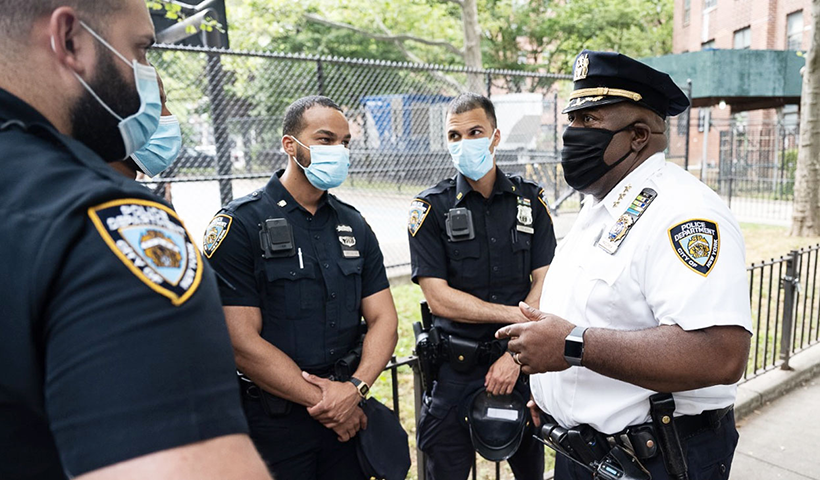Now, for anybody who was here after Hurricane Sandy, you will remember how hard this neighborhood got hit. I talked to a lot of people in those days who lived here, a lot of people who worked here. They went through, really, hell in this neighborhood. A lot of businesses were closed for a long time. It was a very, very difficult situation. This is a particularly low-lying area with a lot of people in it. So, these barriers now are going to provide us a different kind of protection than what we were dealing with back then. If you look over by the Wavertree, I was pointing earlier to that sign, right to the left of the ship, that shows you the high-water mark from Sandy. It was four feet from ground level – from where we are standing – four feet of storm surge. We're expecting a lot less, thank God, with this storm, but it reminds you of what people went through and why it is so important to protect this neighborhood and neighborhoods that are vulnerable. And a lot of different things have been done over the years. Permanent barriers being put in place in a lot of areas. I mentioned this morning, the Rockaway Beach boardwalk – five-and-a-half mile long permanent barrier. It’s a great example, but many, many other efforts have been put in and will be put in in the coming years.
This is a kind of thing we'll have to do to protect ourselves from this point forward, given climate change and the challenges we face. So, I want to thank all of the agencies that have done this great work, and want to encourage all New Yorkers, take this storm seriously. Please take precautions. Please look out for your neighbors. If anyone needs help, make sure you're there for them because this is the kind of thing that comes on fast and people need to be ready.







